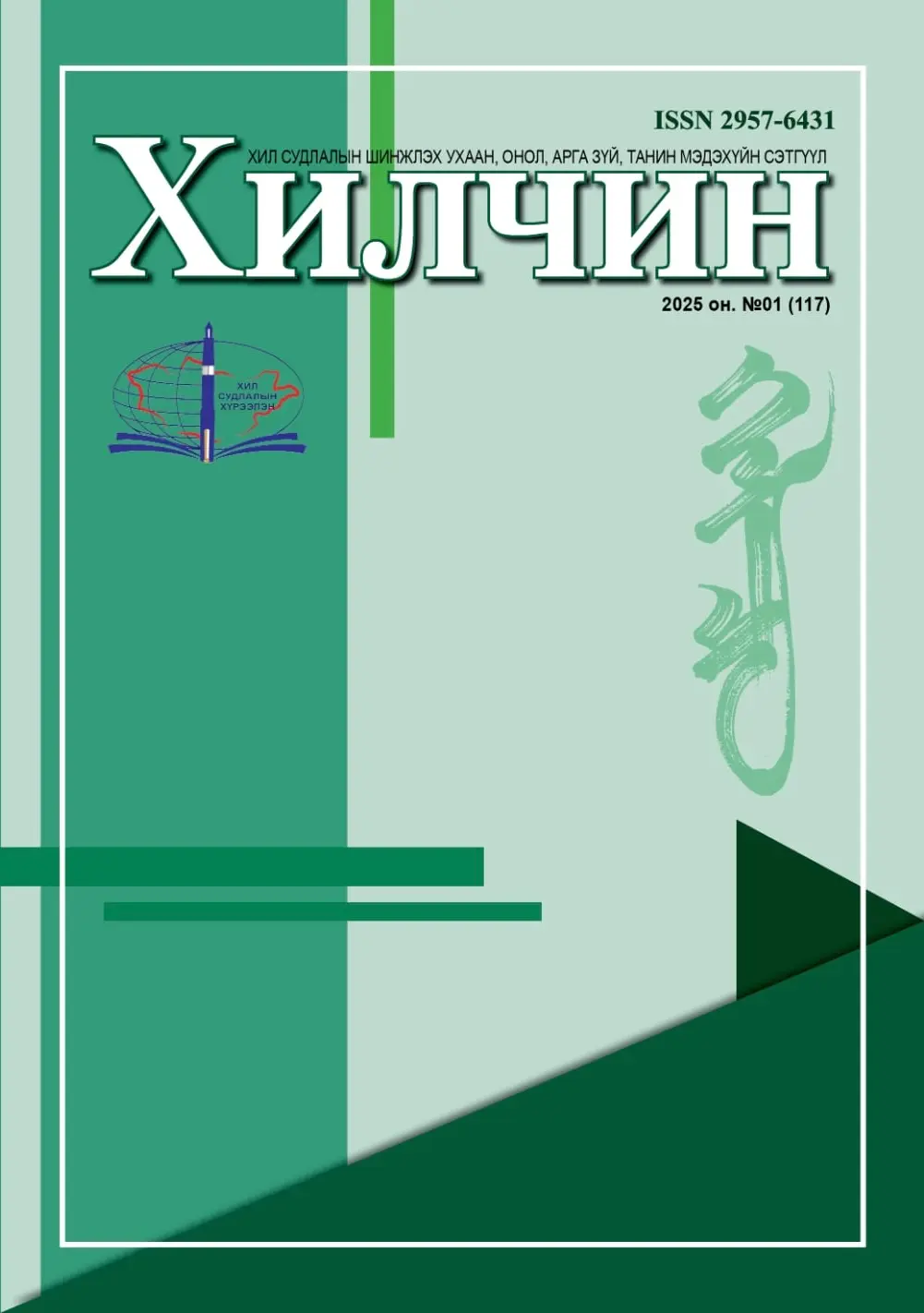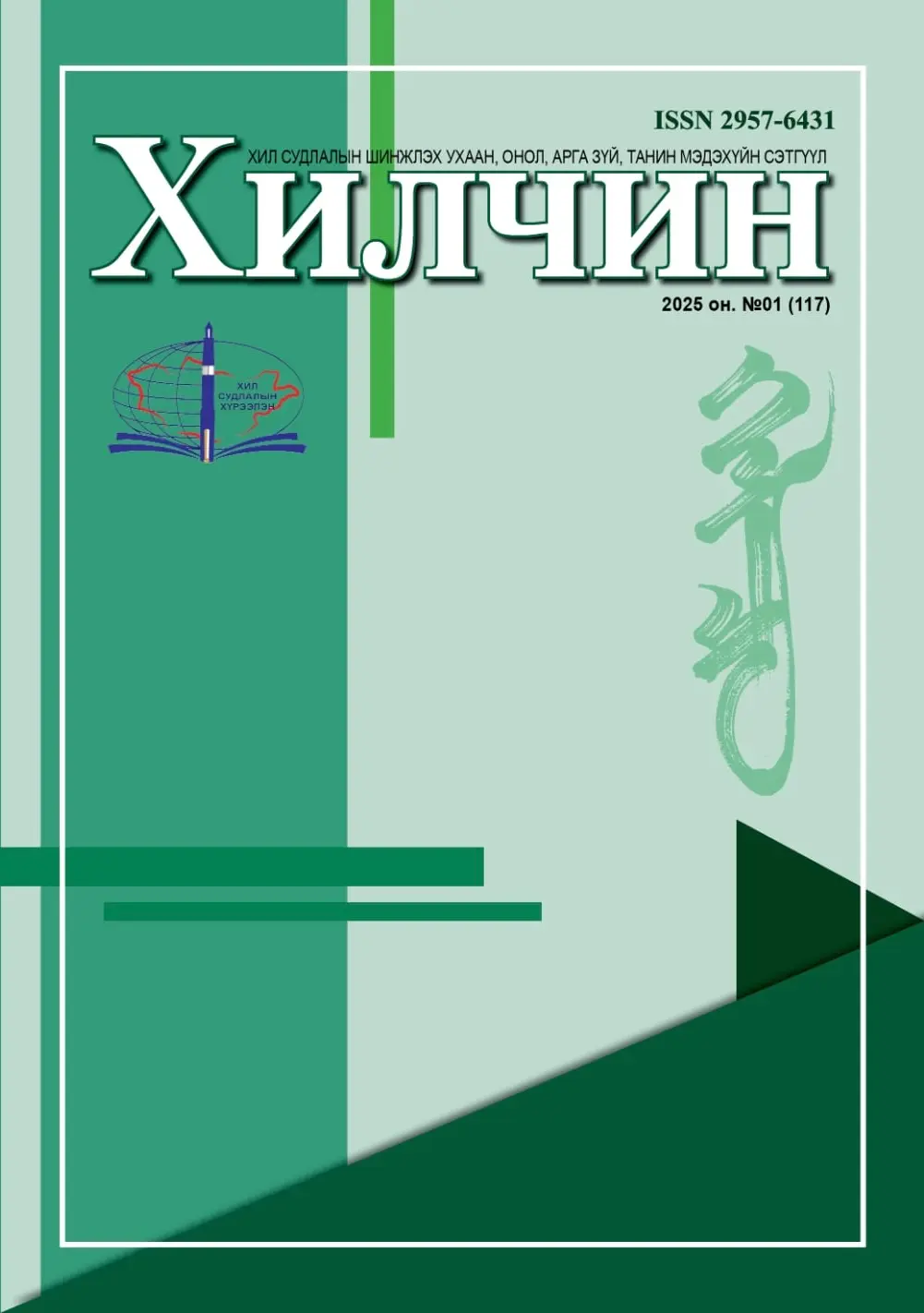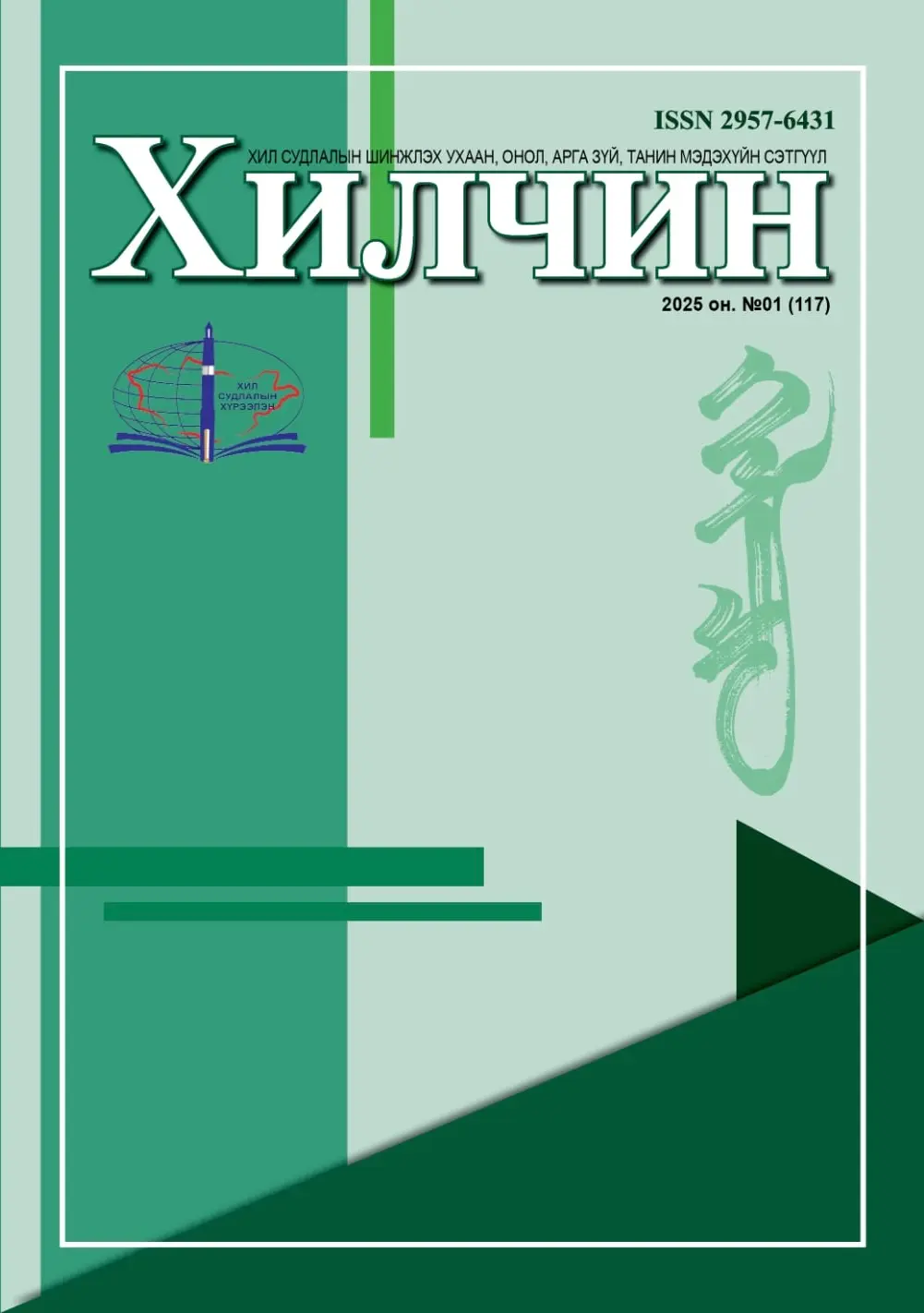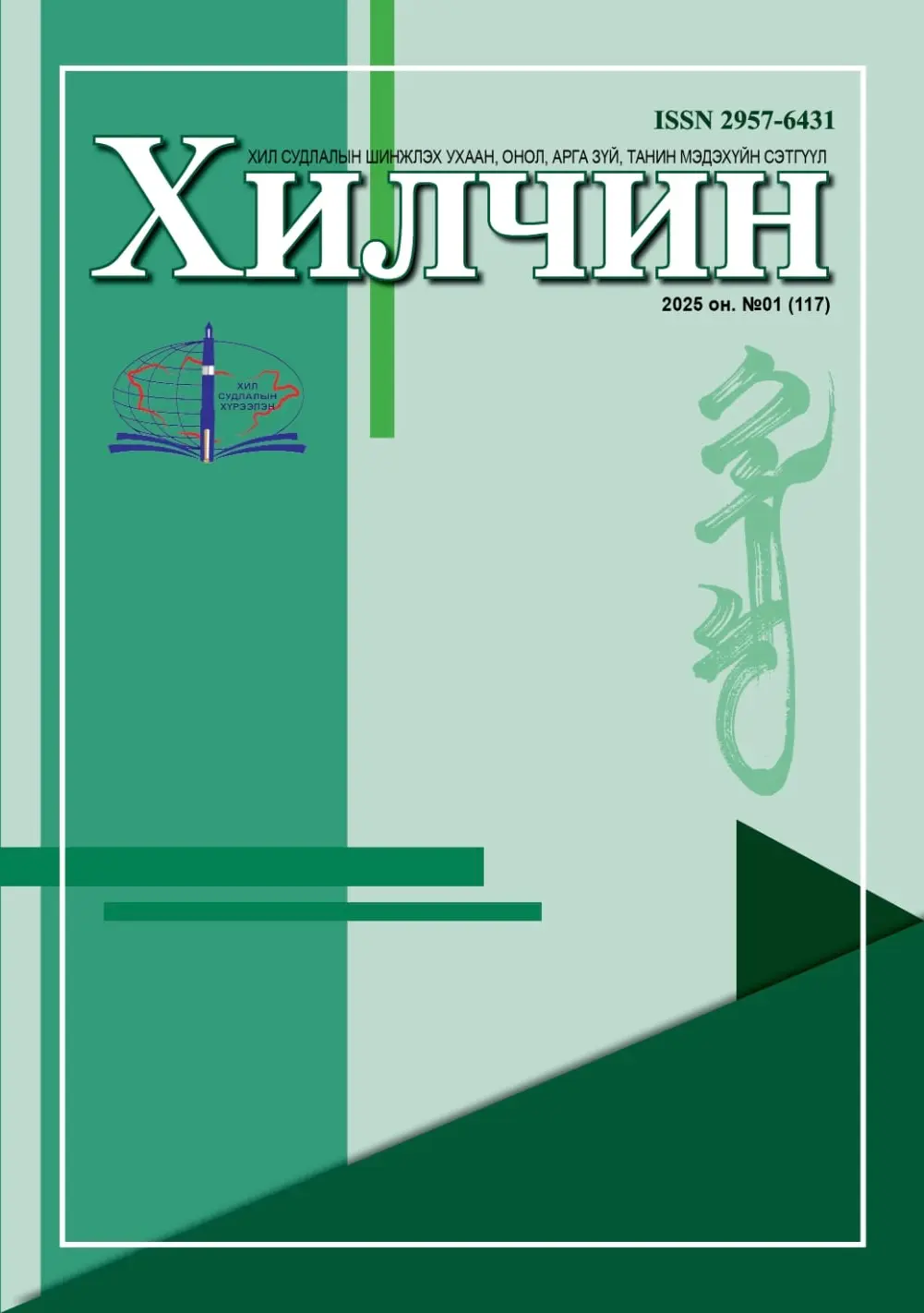
- First of all, thank you for accepting our invitation and giving us an interview. As a member of the government and not an individual politician, you were invited to discuss the regional development policy of Mongolia. Prime Minister L. Oyun-Erdeni's government announced 2024 as the "Year of Regional Development Support". What is your position?
- The issue of regional development of Mongolia has become one of the main topics recently. The government declared 2024 as the "Year of Regional Development Support" in order to achieve the urban and rural recovery objectives of the "Vision-2050" long-term development policy of Mongolia and the "New Revival Policy" and to ensure the balance of development. In this sense, the "Mongolian Economic Forum-2024 Regional Development Conference" was organized in the beginning of 2024 as part of updating the "Regional Development Concept of Mongolia". In other words, six preliminary and two branch discussions were successfully organized.
In doing so, the participation of political parties, governmental and non-governmental organizations, and local representatives was ensured by listening to their opinions and holding joint discussions. As a result, it is believed that the determination of the economic priorities of the regions has become an effective measure. The Working Group, headed by the Deputy Prime Minister and Minister of Economic Development of Mongolia, is working to develop the "Regional Development Concept of Mongolia" and approve it at the spring session of the Parliament. In short, it has been a year in which policies aimed at correcting extreme differences between urban and rural areas, increasing the livelihood and income of the people, and accelerating the development of the country have been defined and the future directions have been laid out.
- In general, what do we mean by "Regional Development"? Since when has this issue been discussed for the first time in our country?
- One of the main directions of development of any country is to create a favorable environment and conditions for citizens' lives. Therefore, regional development of the country with optimal economic organization has been the main solution and tool. In this sense, "Regional development" is considered to be a policy to develop the country by putting national interests above local interests and through careful territorial planning. In this context, it is essential to optimally use the resources and capabilities of the provinces and districts, to effectively manage the interdependence and cooperation between them, taking into account the diversity and cooperation of the regions, the fair distribution of natural resources, and the positive and negative consequences of population migration. In other words, it is the concept of correctly defining and implementing the economic development policy based on the location and economic development of the local area. Regional development policy is not a new concept for our country.
- Is that so?
-Mongolia has been doing territorial distribution since ancient times. For example, from the division of military-political and administrative nature, i.e., the Right Hand, Left Hand, and Center, it was based on the rule of the Manchurian rulers such as Tusheet Khan, Zasagt Khan, Setsen Khan, and Sain Noyon Khan. We know very well that during the time of the Bogd Kingdom, such as Bogd Khan Uul, Khan Khentii Uul, Tsetserleg Mandal Uul, Khan Taishir Uul, and Chandman Uul have been distributed according to the natural pastures and nomadic farming.
However, the issue of regional development was first raised in 1934. Specifically, the study of regional development began in 1960, the "Concept of Development of Mongolia" in 1996, the "Concept of Regional Development of Mongolia" in 2001, and the "Development Program of Regions" in 2005 were implemented by the resolution of the Parliament. has been organized.
- You mentioned that Mongolia approved its regional development policy in 2001. So what was the main feature of this concept? What can be seen as the reason for the lack of results in the implementation process so far?
-The feature of the concept approved in 2001 is to establish economic zoning in Mongolia, and through it, to form regional economic and social complexes based on a unified and relatively independent system of regional and urban-rural development, into four regions: western, eastern, central and eastern. and determined that Ulaanbaatar will be developed according to the standards of an independent region.
The concept played its part in creating economic corridors and energy sources at that time, and implemented large-scale infrastructure projects connecting provinces with paved roads. However, in the past, due to the lack of significant attention to regional development, rural development has slowed down and many problems have arisen due to over-concentration in cities.
- For example?
-Mongolia has a vast area, but due to the migration of people who follow their livelihood, about 50 percent of the population, 84 percent of the total trade and services, 76 percent of the operating enterprises, and 65 percent of the total domestic product are concentrated in Ulaanbaatar, causing air pollution, everyone can see traffic congestion and income inequality. This situation has created an imbalance between urban and rural areas.
On the other hand, the researchers determined that one of the reasons why the goals of the previous regional development concept were not fully realized was due to errors in the electoral system, tax policy, budget, and investment policy. Today, steps have been taken to modify them. Elections were reformed by amendments to the Constitution. It can be considered that the implementation of the regional development policy of the country will be opened in a coordinated manner.
With the changes in the electoral system, the development of the country was viewed only at the level of one province and a few districts, and the state of spending investments and budgets on small, inefficient things was eliminated. In line with the regional development policy, 21 provinces were divided into seven electoral constituencies.
When determining the direction of regional development, Mongolia should take into account many factors such as the population, geographical features, advantages, resources, market environment, infrastructure conditions, natural resource extraction and production of the provinces, develop a new regional development policy of Mongolia, and macro There was a need and requirement to establish a new zone. Therefore, the time has come for the government to come up with a regional development model for Mongolia, evaluate the mistakes of the past years, look at the regional development policy from a new perspective, and start implementing new goals in the future.
- Could you give me some information about the main ideas of the "Regional Development Concept" that is being prepared for approval, and the social and economic priorities of the six newly defined regions?
- The main way to achieve the goals and objectives of the regional development concept is to establish economic zoning in Mongolia, and through it, create regional economic and social complexes based on an independent system of regional and urban-rural development. It was decided to reflect the opinions and conclusions of the "Mongolian Economic Conference-Regional Development-2024" consultation on the regional development of Mongolia, determining the priorities and development policies of the regions, and revising the concept of regional development. The vertical zoning policy of "West, Khangain, Central, East, Ulaanbaatar" was considered in the "Regional Development Concept" of 2001, but this time, the regions were connected horizontally and vertically into Gobi, Khangai, West, East, Central, and North. It is planned to develop in six regions, and then the priorities of these regions are defined.
According to the research, the division of Mongolia into six regions is highly beneficial for space, economy and society. In other words, the development of trade and services based on economic corridors in the Western region, the development of science and technology, industry, intensive animal husbandry and agriculture in the Northern region, the development of port development, transport logistics, intensive animal husbandry, and border tourism in the Eastern region. the development of specialized tourism (archaeology, recreation, spa treatment, religion, etc.) in the region, the development of mining, heavy industry, and construction material production in the Gobi region, the development of intensive agriculture, food production, and border tourism in the Central region directions are defined as the first.
By renewing the concept of regional development, planning investments based on economic priorities, new concentration areas, multiple economic pillars, and local economic expansion will be created. Problems such as migration to Ulaanbaatar city, air pollution and congestion will be solved. In this way, the best solution is to divide the territory into regions and implement different policies for each of the less developed regions and the regions and cities with a good future of development. In addition, it is necessary to optimally determine the main areas of business for each province and sub-district in the region, to create a business environment for mutual development, and to make reasonable arrangements to establish proper connections with domestic and foreign markets
.
- We have a big lesson from the previous concept. Therefore, what should be considered to ensure the stability of the "Regional Development Concept" to be approved this time, and what factors are considered important for its long-term implementation?
- There have been many policies and laws on the regional development of Mongolia, but as mentioned above, they have not been implemented. Therefore, it is necessary to ensure the stability of the concept of regional development. Firstly, it is necessary to prioritize national interests rather than local ones, and secondly, it is necessary to comprehensively consider the issues of territorial spatial planning and development. Thirdly, the resources and capabilities of each region will be optimally used for common interests, and fourthly, the interdependence and cooperation mechanisms between them will be effectively used, taking into account the specialization, diversification, and cooperation of the regions. Fifthly, it is very important to determine the issue of fair distribution of natural resources, and sixthly, to correctly calculate the positive and negative consequences of population migration.
Also, in order to ensure the stability of the concept, it is necessary to consider the efficiency and expansion of economic cooperation with the characteristics of neighboring countries and regions. However, for the long-term sustainable implementation of the concept, it is necessary to create a favorable legal environment, to form a relatively independent regional system, to maintain stable state policies and continuity, and to strengthen unified values. In addition, another important factor is the implementation of financing or regional development policy supported by long-term budget and capital policy.
- One of the six newly planned zones is the "Khangai zone". What are the main features of the region and the priority areas of the economy?
- Arkhangai, Overkhangai and Bayankhongor provinces depend on the Khangai region. In this region, the main feature that distinguishes it from other regions is the suitability for diversified development of agricultural resources, development of animal husbandry, archeological-historical monuments, and biomedical tourism. Specifically, I would like to mention some social and economic indicators of Khangai region. As of 2023, about 301.9 thousand or about nine percent of the total population of the country live in this area. About 40% of these citizens are young people aged 10-44, which can be considered a great advantage for the workforce.
In terms of economy, considering the region's gross domestic product by province, 39.1 percent of Arkhangai province, 36.4 percent of Uverkhangai province, and 24.5 percent of Bayankhongor province. As for animal husbandry, 189,200 households are raising animals and are involved in the production of meat, milk, wool, cashmere, and leather. However, the development of production of agricultural products other than meat and milk is weak. There are also 126 kindergartens and 87 general schools in the region. If the number of children per primary kindergarten teacher is 31, the number of children per school teacher is 19, the number of children per doctor is 424.
In addition, the Khangai region has a large number of livestock. There is a great potential for the preparation of animal husbandry raw materials. The territory of Orkhon Valley can become an area with potential and resources to compete in the international tourism market. There are many explored natural mineral and raw material resources and archaeological finds. It has ecologically beautiful natural and historical monuments and spas. There is a base for the production of biotechnology. By implementing the Orkhon-Ongi project and supporting the flow of the Ongi River from the Orkhon River, there are advantages such as the possibility of increasing irrigated agriculture and livestock fodder cultivation.
Also, the development of infrastructure, foreign and domestic trade flows, transport logistics ports, heavy and light industry is weak, small and medium industry and services are developed differently, experienced labor resources, agricultural production, insufficient number of jobs, and the material base of secondary schools. There are also weaknesses such as not being fully strengthened, lack of financial resources in the health sector, and lack of integrated travel and tourism management.Based on these social and economic indicators, by improving the advantages of the region and correcting the weaknesses, the city of Khangai will be developed in the future by establishing and developing the "New Kharkhorum" city, preserving the nomadic civilization and historical monuments, and having the optimal combination of social development, tourism, light and heavy industry. It shows that it is fully possible to develop into a region that provides a proper population settlement system and a balanced urban and rural development.
Therefore, based on the preliminary discussions and conclusions of the "Mongolian Economic Forum-Regional Development-2024" consultation and the opinions and conclusions of the "Khangai region", firstly, the development of agriculture (livestock) that ensures the balance of the ecosystem, and secondly, food and light production (diversification and development through agricultural resources), thirdly, formation of migration culture, history, religion, nature, bio-medical (recreation, sanatorium) tourism, fourthly, a smart new Kharkhorum based on culture, art, science, and intellectual capabilities it is tentatively determined that it is desirable to develop the city (innovation center) in four priority areas of the economy: to develop around it.
By fulfilling the above priorities, it is expected that the social and economic development of this region will enter a new stage in the near future and become the main region of the country.
- At the beginning of your interview, you said that one of the reasons why the government reconsidered the issue of regional development was the implementation of the objectives of the "New Revival Policy" for urban and rural revival and ensuring the balance of development. In the past, what measures have been taken in relation to regional development in this context?
- In the past, the government has implemented a number of activities and measures. For example, as part of the goal of creating basic conditions for regional development, the government approved the "5 Rings of New Revival" program in 2023 and included funding funds in the 2024 budget. Within the framework of the program, the factors limiting the development of provinces and localities throughout Mongolia will be comprehensively resolved. For example, it is planned to start a new era of the road network, to connect between provinces, border ports, and main tourist destinations, to fully solve the heat supply of provinces, to increase the capacity of electricity sources in large settlements, and to implement housing. Basically, with the implementation of this program, not only will all provinces be connected with paved roads, but also five vertical road corridors will be created to connect the southern and northern border ports.
In addition, it is worth mentioning that the President and Government of Mongolia are implementing many programs aimed at supporting regional development and accelerating rural development. For example, within the framework of the "100-year-10 goals" initiated by the President of Mongolia, the introduction of livestock raw materials into economic circulation, the start of the "White Gold" program, "President's Message 2100", "Protection of Khuvsgul Lake", programs such as "Food Supply, national movements such as "Safety", "Terbum Mod", "Healthy Mongolian People", "Health" to increase the fee for veterinary services by the government, create "Herdsmen Development Center", "Professional Education Program for Herdsmen", "Herdsmen boarding house for children", "Green fodder 100 sums 100 ha", "Livestock cluster", "Livestock program" to prevent herdsmen who lose their source of income from falling into poverty are being implemented and bearing results.
Also, the government launched the "New Cooperative Movement" in order to prevent disasters that may occur in the livestock sector due to climate change, and support livestock production and herdsmen's cooperatives in order to sustainably develop them as part of the "New Revival Policy" of Urban and Rural Revitalization. TAVAN IKH NAYAD's "New Cooperative-Prosperous Herdsman" program has been launched across the country. Within the framework of the movement, investment loans of up to 50 million MNT for a period of up to 60 months are provided to herdsmen with an interest rate of 6 percent. Farmers cooperatives are engaged in activities related to animal fertilization, workshops for the production of final products from by-products, veterinary services, making wells and water points in pastures, preparing wool and leather, storing livestock and animal-derived raw materials, building and operating cellars, meat and milk. , it will be possible to get investment loans in the fields of dairy products preparation and processing.
-How do you see the possibility of investment and financial resources supporting regional priorities? Which sector do you think needs more attention?
- Of course, in addition to implementing optimal tax, credit, and investment policies that are specific to each region, in addition to increasing the possibility of financial resources that support the priorities of the regions, properly planning the distribution of mining and natural resources and optimizing budget investments are conditions that will ensure the economic independence of the region in a short period of time. It is believed that it will consist. On the other hand, it is important to attract foreign investment and use loans, aid, projects and programs to finance only efficient priority projects and measures. In this way, the social and economic development of the region will enter a new stage and will create advantages that will be the main factor supporting the country's economy. In addition, it is important to build an economic corridor with the two neighbors, and implement road transport, energy, and infrastructure projects in coordination with the development policy. For example, regarding the Khangai region, it is possible to increase the economic turnover and potential of the region by opening the "Naransevstei" port in Bayankhongor province, which borders China, and increasing the turnover of foreign trade. Thus, by implementing the budget and investment policy to ensure the development of the region, we are sure that regions that will support the country's economy in the near future and in the distant future will be created and will bear fruit.
- Can't we pass without asking you about the results and importance of implementing the regional development policy?
- With the phased implementation of the renewed concept of regional development of Mongolia, it will be possible and necessary to limit the budget investments devoted to constituencies, organize inefficient investments, focus on strategically important goals for determining the development of the country, and create opportunities and conditions for the practical implementation of the regional development policy. In addition, by rationally defining economic priorities and planning investments based on them, new concentration areas, many pillars of the economy, and economic expansion in local areas.




